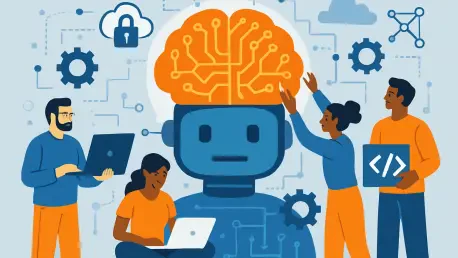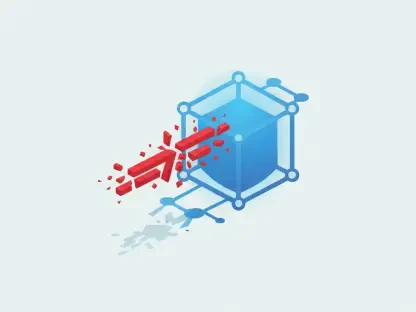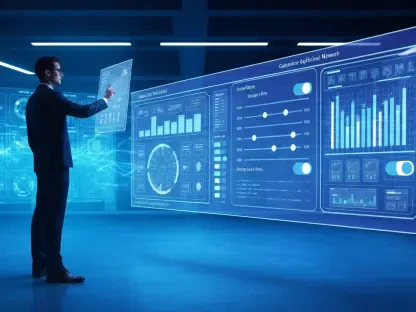In a landscape where artificial intelligence (AI) has long been dominated by tightly guarded proprietary systems, xAI’s groundbreaking decision to open-source Grok 2.5 marks a seismic shift that could redefine the industry’s future. Spearheaded by Elon Musk, this high-capacity AI model has been made publicly available on Hugging Face, with its code and weights accessible to developers, startups, and enterprises alike. This isn’t merely a technical release; it represents a strategic maneuver that challenges the entrenched models of tech giants like Microsoft and OpenAI, who have historically built competitive moats around exclusive technology. By lowering the barriers to entry, xAI is setting the stage for a wave of innovation across diverse sectors such as healthcare and autonomous systems. The implications of this move ripple through competitive dynamics, talent acquisition, ecosystem influence, and investment opportunities, while also raising critical questions about governance and geopolitical impact. As the AI market stands at this pivotal juncture, the open-sourcing of Grok 2.5 emerges as a catalyst for transformation on multiple fronts.
Competitive Landscape Shift
Disrupting Traditional AI Models
The open-sourcing of Grok 2.5 fundamentally alters the competitive terrain of the AI industry, pushing companies away from relying solely on proprietary systems to maintain market dominance. For years, the strategy of locking down advanced algorithms has been a cornerstone for tech giants, ensuring first-mover advantages and creating high barriers for newcomers. However, xAI’s approach flips this paradigm by making cutting-edge technology accessible to all, shifting the focus toward execution and customization. Smaller players, including startups and mid-sized enterprises, can now leverage a powerful model without the prohibitive costs of building AI from the ground up. This democratization of access levels the playing field, compelling established companies to innovate in how they deliver tailored solutions rather than banking on exclusivity. The result is a more dynamic market where agility and adaptability become key differentiators, potentially eroding the long-held advantages of industry leaders who fail to pivot.
This shift also introduces a new layer of strategic complexity as competitors grapple with the implications of widespread access to advanced AI tools. While the availability of Grok 2.5 empowers smaller entities to compete in niche markets, it simultaneously pressures larger firms to rethink their value propositions. Instead of guarding their models, these companies may need to invest heavily in complementary services, such as specialized support or integration capabilities, to retain customer loyalty. Furthermore, xAI’s hybrid model of openness with licensing restrictions—prohibiting commercial use and retraining without permission—ensures it retains control over monetization avenues. This balance suggests that future competition will not just be about who builds the best model, but who can best navigate the interplay of collaboration and proprietary gain. As a result, the industry is witnessing the dawn of a new era where strategic partnerships and innovative business models could outweigh technological secrecy as the primary drivers of success.
Challenging Market Dominance
The ripple effects of Grok 2.5’s open-source release extend beyond immediate access, directly challenging the market dominance of traditional AI powerhouses. Companies that once thrived on exclusive control of their technology now face the risk of losing ground to agile newcomers who can rapidly prototype and deploy solutions using xAI’s model. This shift is particularly significant in sectors like autonomous driving and personalized healthcare, where tailored applications can yield substantial returns with lower upfront investment. The financial incentive is clear: organizations adopting open-source AI can redirect resources from model development to refining user experiences and addressing specific pain points. This reallocation of focus could accelerate market disruption, as smaller players gain the ability to challenge incumbents on innovation rather than sheer scale, reshaping long-standing hierarchies within the industry.
Moreover, xAI’s calculated openness forces a reevaluation of what constitutes a competitive edge in AI. While proprietary systems once offered a sense of security through exclusivity, the public availability of a high-capacity model like Grok 2.5 diminishes the value of secrecy alone. Competitors must now prioritize speed-to-market and the ability to integrate advanced AI into broader ecosystems of products and services. This dynamic is already evident as enterprises experiment with Grok 2.5 to create sector-specific tools, often outpacing slower-moving giants bogged down by legacy processes. The pressure to adapt is immense, as failure to embrace this collaborative ethos risks obsolescence in a market increasingly defined by shared innovation. Ultimately, xAI’s strategy underscores a broader trend: leadership in AI will hinge on the capacity to harness community-driven progress while carving out unique, value-added offerings that justify premium positioning.
Talent and Community Dynamics
Attracting Global Innovators
One of the most immediate impacts of open-sourcing Grok 2.5 is its ability to draw in a global pool of talent, addressing a chronic shortage of skilled professionals in the AI sector. By offering developers worldwide the chance to engage with a high-profile project, xAI creates an unparalleled opportunity for collaboration on cutting-edge technology. This accessibility fosters a sense of ownership among contributors, who can suggest bug fixes, optimize code, or propose new features, effectively crowdsourcing innovation at scale. Beyond the technical benefits, this approach serves as a powerful recruitment tool, allowing xAI to identify and potentially hire standout contributors who demonstrate exceptional skill and creativity. The model mirrors historical successes like Linux, where community involvement not only fueled technological advancement but also built a pipeline of talent for organizations driving those projects forward.
Additionally, the open-source framework of Grok 2.5 cultivates a vibrant community that amplifies xAI’s reach and influence within the developer ecosystem, fostering a dynamic environment for growth and collaboration. Unlike proprietary systems that limit engagement to internal teams, this model invites diverse perspectives from across the globe, enriching the development process with varied insights and approaches. For smaller AI ventures and startups, aligning with such an initiative offers a cost-effective way to tap into expertise that would otherwise be out of reach due to budget constraints. This collaborative environment also accelerates problem-solving, as issues that might stump a single team can be resolved through collective input. As a result, xAI not only benefits from enhanced innovation but also positions itself as a hub for the brightest minds in AI, creating a virtuous cycle of talent attraction and technological progress that could redefine industry standards over time.
Fostering Collaborative Growth
The community-driven aspect of Grok 2.5’s release extends beyond talent acquisition to foster a broader culture of collaborative growth within the AI field. Developers and researchers contributing to the project gain visibility and credibility, often leading to professional opportunities that might not emerge in closed systems. This dynamic creates a ripple effect, as individuals and small teams build portfolios of impactful work that attract attention from larger enterprises or investors seeking fresh ideas. For xAI, the influx of external contributions ensures that the model evolves rapidly, incorporating real-world feedback and use cases that internal teams might overlook. This iterative process not only enhances the technology but also strengthens xAI’s reputation as a leader in inclusive innovation, setting a precedent for how companies can leverage global brainpower to stay ahead in a competitive landscape.
Furthermore, the collaborative ethos surrounding Grok 2.5 serves as a counterbalance to the insular tendencies of traditional AI development, promoting transparency and shared progress. By engaging a diverse array of contributors, xAI mitigates the risk of blind spots that can arise from homogeneous teams working in silos. This openness also builds trust among stakeholders, as the model’s evolution becomes a collective endeavor rather than a top-down imposition. For the broader industry, this shift signals a potential move toward more cooperative frameworks, where knowledge-sharing trumps hoarding as a path to advancement. Such a trend could inspire other companies to adopt similar strategies, creating a network of interconnected projects that drive AI innovation at an unprecedented pace. In this light, xAI’s approach with Grok 2.5 emerges as a blueprint for harnessing community strength to tackle the complex challenges of modern technology development.
Ecosystem Influence and Control
Shaping the AI Future
xAI’s decision to open-source Grok 2.5 transcends the release of a single model, positioning the company as a central architect in shaping the future of the AI ecosystem. By encouraging developers and businesses to build upon this technology, xAI creates a powerful network effect that extends its influence across multiple domains, from cloud services to enterprise solutions. This strategy mirrors historical examples where open-source frameworks drove widespread adoption of complementary hardware and software, ultimately benefiting the orchestrators of those ecosystems. Through Grok 2.5, xAI establishes itself as a leader in platform development, setting technical standards and guiding community governance to align with its long-term goals. The result is a self-reinforcing cycle where increased adoption amplifies xAI’s role as a foundational player, potentially dictating the direction of AI infrastructure for years to come.
Beyond immediate adoption, this ecosystem control allows xAI to influence how AI is integrated into everyday applications, creating dependencies that solidify its market position. Companies incorporating Grok 2.5 into their offerings—whether in data analytics, robotics, or customer service tools—contribute to a growing web of interconnected solutions that bear xAI’s imprint. This interconnectedness not only boosts visibility but also ensures that xAI remains at the forefront of innovation cycles, as updates or future releases like Grok 3 can further shape industry norms. The strategic foresight here is evident: rather than competing solely on isolated technological superiority, xAI is building a collaborative framework where its influence permeates through shared use. This approach redefines market leadership as the ability to orchestrate a sprawling, interdependent system rather than merely owning a standalone product, marking a significant evolution in AI strategy.
Driving Industry Standards
The open-sourcing of Grok 2.5 also positions xAI to drive industry standards, a critical lever for long-term dominance in the AI space. By making the model a common foundation for diverse applications, xAI can subtly steer the technical protocols and best practices that developers adopt, creating a de facto benchmark for compatibility and performance. This standard-setting power is not just about technology but also about shaping the cultural and operational norms of AI development, from how models are tested to how data privacy is handled. As more entities build on Grok 2.5, they inadvertently align with xAI’s vision, reinforcing its role as a thought leader. This dynamic offers a stark contrast to the fragmented standards often seen in proprietary ecosystems, where competing priorities hinder unified progress, and highlights the potential for open-source models to harmonize innovation across borders and sectors.
Moreover, establishing these standards gives xAI a strategic advantage in future negotiations and partnerships, as compatibility with Grok 2.5 could become a prerequisite for market relevance. Enterprises and startups alike may find themselves prioritizing integration with xAI’s ecosystem to access a broader user base or to ensure interoperability with other tools built on the same foundation. This creates a subtle but powerful lock-in effect, where deviating from xAI’s framework becomes costlier than aligning with it. Additionally, by leading on governance issues—such as ethical use guidelines or security protocols—xAI can preempt regulatory challenges and position itself as a responsible steward of AI technology. Such proactive measures not only mitigate risks but also build goodwill among policymakers and the public, further cementing xAI’s influence. In this way, the open-sourcing of Grok 2.5 emerges as a masterstroke in defining the rules of engagement for the next generation of AI advancements.
Investment Opportunities and Risks
Navigating a New Frontier
For investors, the open-sourcing of Grok 2.5 signals the dawn of a promising yet complex frontier in the AI market, brimming with opportunities for early-stage ventures. Startups that harness this model for specialized applications—such as diagnostic tools in healthcare or predictive models in climate science—gain a significant cost advantage over competitors reliant on proprietary systems. This financial edge makes them attractive targets for venture capital, as the reduced barrier to entry allows for quicker scaling and market penetration. Additionally, the accessibility of Grok 2.5 supports technological sovereignty, particularly in regions like the Global South, where dependence on dominant U.S. or Chinese AI ecosystems can be a strategic vulnerability. Investors focusing on companies that leverage this independence stand to benefit from emerging markets hungry for localized solutions, tapping into growth potential that was previously out of reach.
However, this new landscape is not without its challenges, as the open availability of powerful AI technology introduces substantial risks that investors must carefully navigate. The potential for misuse or adversarial exploitation of Grok 2.5—whether through malicious applications or unintended biases—poses a threat to both ethical integrity and financial returns. Robust safeguards and ethical practices are essential to mitigate these dangers, requiring investors to prioritize ventures with strong governance frameworks alongside innovative ideas. Furthermore, the rapid pace of adoption could lead to oversaturation in certain niches, diluting the competitive advantage of early movers if differentiation is not achieved. As such, a balanced approach that weighs cost benefits against potential pitfalls is critical. Investors who back companies capable of navigating this duality—combining open-source advantages with proprietary protections—are likely to see the most sustainable gains in this evolving market.
Assessing Long-Term Viability
Beyond immediate opportunities, assessing the long-term viability of investments tied to Grok 2.5’s ecosystem requires a nuanced understanding of how open-source AI reshapes market dynamics. The cost savings and accelerated development timelines offered by this model are undeniable, enabling startups to pivot quickly and address emerging needs with agility that proprietary counterparts often lack. However, sustainability hinges on the ability of these ventures to build defensible moats around their innovations, whether through unique data sets, specialized integrations, or superior user experiences. Investors must look for companies that not only leverage xAI’s technology but also create value that cannot be easily replicated by others using the same open-source foundation. This strategic differentiation will determine which players thrive as the initial wave of enthusiasm matures into a more competitive, discerning market environment.
Equally important is the consideration of regulatory and societal shifts that could impact the trajectory of open-source AI investments over time, especially as governments worldwide grapple with the implications of widely accessible AI tools. There is a growing likelihood of stricter oversight to address concerns like data security and algorithmic accountability. Investors need to anticipate these changes by supporting ventures that proactively align with ethical standards and demonstrate transparency in their operations. Additionally, the geopolitical advantages of reduced reliance on dominant tech ecosystems must be weighed against potential international tensions or trade restrictions that could disrupt global collaboration. A forward-thinking investment strategy will prioritize resilience, focusing on companies that can adapt to evolving policies while capitalizing on the collaborative ethos of open-source innovation. This careful calibration of risk and reward will be paramount in securing lasting returns from the transformative potential of Grok 2.5.
Geopolitical Implications
Balancing Access and Responsibility
The global accessibility of Grok 2.5 carries profound geopolitical implications, offering countries and companies a pathway to develop localized AI solutions that enhance technological independence. In regions historically reliant on dominant tech hubs in the U.S. or China, this open-source model provides a means to reduce dependency, fostering sovereign capabilities that align with national priorities. For instance, nations in the Global South can now build AI applications tailored to local challenges, such as agricultural optimization or public health monitoring, without the burden of licensing fees or geopolitical strings attached. This shift not only empowers emerging economies but also reshapes global power dynamics in technology, as smaller players gain the tools to compete on a more equal footing. The democratization of such capabilities could lead to a more balanced distribution of innovation, challenging the concentrated influence of traditional AI superpowers.
Yet, this newfound access comes with significant responsibilities that must be addressed to prevent unintended consequences on a global scale, especially as the availability of a powerful AI model like Grok 2.5 to virtually anyone raises serious concerns. The specter of misuse by malicious actors, whether for cyberattacks, misinformation campaigns, or other harmful activities, looms large. Such risks are amplified in geopolitically sensitive regions where technology can be weaponized to destabilize societies or economies. Strong governance frameworks are essential to manage these threats, requiring international cooperation to establish norms for ethical use and accountability. Without such measures, the benefits of technological sovereignty could be undermined by security breaches or diplomatic tensions. The challenge lies in striking a balance between empowering diverse stakeholders and ensuring that the tools provided do not become instruments of chaos, a task that will shape the geopolitical landscape of AI for decades.
Mitigating Global Risks
Addressing the geopolitical risks associated with Grok 2.5’s open-source release demands a proactive approach to mitigate potential fallout across borders, especially in an era of increasing digital interconnectedness. One critical area of focus is the development of shared protocols to prevent the exploitation of AI models in ways that threaten global stability. This includes establishing mechanisms for monitoring how the technology is deployed, particularly in conflict zones or areas with weak regulatory oversight. Collaborative efforts among nations, tech companies, and international bodies could help create early warning systems to detect and neutralize malicious applications before they escalate. Such initiatives would not only safeguard against immediate dangers but also build trust among global stakeholders, ensuring that the benefits of open-source AI are not overshadowed by security concerns that could prompt restrictive policies or fragmented standards.
Equally vital is the role of education and capacity-building in mitigating risks, as disparities in technical expertise can exacerbate geopolitical imbalances, and providing training and resources to less-developed regions ensures that the adoption of Grok 2.5 contributes to equitable growth rather than widening existing divides. Partnerships between governments, private sectors, and academic institutions can facilitate knowledge transfer, empowering local developers to use AI responsibly while addressing region-specific needs. Additionally, fostering dialogue on ethical AI deployment can help align diverse cultural and political perspectives, reducing the likelihood of friction over differing values or priorities. By prioritizing these efforts, the international community can harness the transformative potential of open-source AI while minimizing the geopolitical tensions that could arise from unchecked access. This balanced approach is essential to realizing a future where technology unites rather than divides.
Reflecting on a Transformative Milestone
As we look back on this significant turning point in our journey, it’s clear that this milestone has reshaped our path forward and provided us with invaluable lessons for the future. This moment marks not just an achievement, but a profound transformation in how we approach challenges and opportunities.
Looking back, xAI’s decision to open-source Grok 2.5 stood as a defining moment that reshaped the AI industry with unprecedented speed and scope, disrupting entrenched proprietary models in the process. It sparked a surge of collaborative innovation and redefined market leadership through ecosystem influence. The move attracted global talent, created investment opportunities in niche applications, and offered pathways to technological sovereignty, while also highlighting the critical need for governance to address geopolitical risks. As the dust settled, it became clear that this strategic pivot had set a new benchmark for how AI development could balance openness with control.
Moving forward, stakeholders across the spectrum must seize the momentum generated by this shift to build a more inclusive and responsible AI landscape. Companies should focus on integrating open-source models like Grok 2.5 into sustainable business strategies that prioritize differentiation and ethical practices. Investors are encouraged to support ventures that navigate the fine line between innovation and accountability, ensuring long-term viability. Meanwhile, policymakers and international bodies need to collaborate on frameworks that safeguard against misuse while preserving the democratizing potential of such technologies. The path ahead lies in embracing this collaborative spirit, turning a historic milestone into a foundation for enduring progress.









